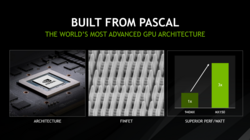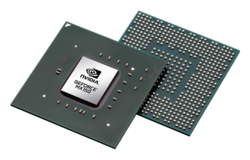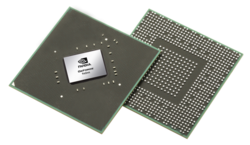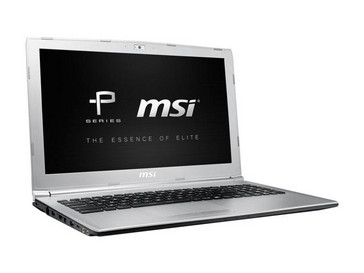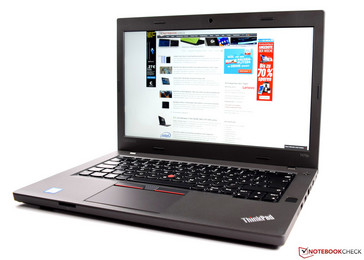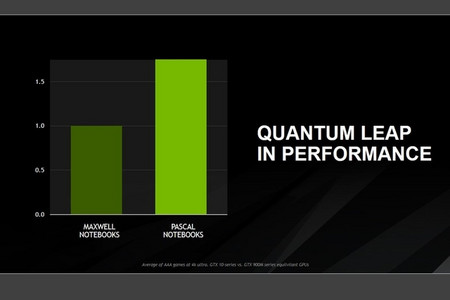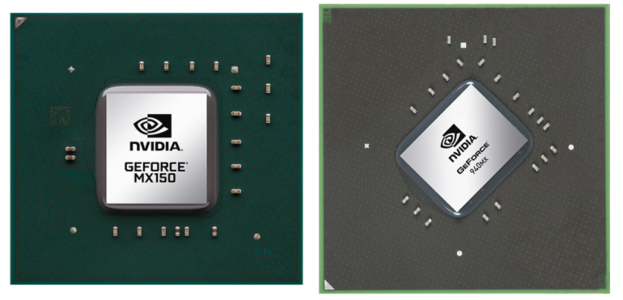Comparison: NVIDIA GeForce MX150 vs NVIDIA GeForce 940MX
Introduction
The past year has seen great strides being made in the GPU space. The portable form factor of the typical notebook has been an hindrance to packing more powerful GPUs considering issues like heat dissipation and other component bottlenecks but modern notebook GPUs are no slouches when it comes to performance and almost rival their desktop counterparts. Notebooks have traditionally offered both integrated and discrete GPU solutions to cater to the wide demographic. In an earlier article, we have elucidated on how to choose notebooks featuring integrated and discrete graphics. Here, we take a detailed look at two of the most popular discrete notebook GPUs — the NVIDIA GeForce MX150 and its predecessor, the NVIDIA GeForce 940MX GDDR5. Both these GPUs offer great performance for the buck in their respective generations but does the MX150 really offer a significant performance improvement over its predecessor, enough to warrant an upgrade? Read on to find out.
NVIDIA GeForce MX150
NVIDIA’s Pascal architecture has seen resounding success, especially with the top tier GPUs such as the GeForce GTX 1050 and above. For perhaps the first time, notebook GPUs have started to clock in comparable performance to their desktop counterparts and NVIDIA has decided to forego the “mobile” moniker altogether. Notebooks featuring the GTX 1050 and up are priced on the higher side and are aimed at content creators and gamers. The MX150 (mobile GT 1030) is an effort to bring Pascal goodness to the masses who need enough GPU oomph for smooth 4K video playback and for playing the latest AAA titles at low settings. It aims to serve as an alternative to the integrated Iris Pro/Iris Plus found in the latest Intel Sky Lake/Kaby Lake offerings and can potentially empower ultrabooks as well as budget laptops.
The MX150 is based on the 16nm GP108 chip and supports a maximum of 2 GB GDDR5 VRAM, a core clock of 1468 MHz (boost clock, 1532 MHz) along with support for DirectX 12, Vulkan and OpenGL 4.5 APIs. The TDP hovers around the 25W mark but OEMs can tune the clock speeds to meet specific TDP and performance objectives. The GP108 features a 16 raster operation pipeline (ROP) count while having the same 384 CUDA cores as the Maxwell-based 940MX (8 ROPs). This, coupled with architectural advantages of the Pascal core, results in significant improvements over its Maxwell predecessor, the GM108.
NVIDIA GeForce 940MX (GDDR5)
The GeForce 940MX is based on the older 28nm Maxwell architecture and is a refresh to the GeForce 940M with faster GDDR5 VRAM and a higher clock speed. This GPU is ideal for light to medium graphic loads and can run last year’s games fairly well at low settings. Content creators will also get by fine, provided the workloads are light.
Variants of the 940MX exist and largely depend on the OEM. The 940MX with the GM107 chip features 512 CUDA cores but slower clock speeds (795 - 861 MHz) while the GM108 features 384 CUDA cores with increased speeds (1122 - 1242 MHz). The 940MX comes enabled with NVIDIA’s proprietary technologies such as GPU Boost 2.0, Optimus, PhysX and GameWorks. The 940MX can support upto 4 GB VRAM and has a TDP hovering around the 15 - 30W mark depending on how the OEM adjusts the clock frequencies. The GPU supports DirectX 12 up to Feature Level 11_0 and OpenGL 4.5 APIs.
Here's a table putting the specifications of both the GPUs in perspective —
GeForce MX150 vs GeForce 940MX — Spec Comparison
| GeForce MX150 | GeForce 940MX | |
|---|---|---|
| Codename | N17P-G1 | N16S-GTR-B/S |
| Architecture | Pascal 14nm | Maxwell 28nm |
| CUDA Cores | 384 | 384 |
| Raster Operation Pipelines (ROPs) | 16 | 8 |
| Core Clock | 1468 MHz (Base) 1532 MHz (Boost) | 1122 MHz (Base) 1242 MHz (Boost) |
| Memory Bus Bandwidth | 64bit | 64bit |
| Memory Type | GDDR5 | GDDR5/DDR3 |
| Max VRAM Supported | 2048 MB | 4096 MB |
| API Support | DirectX 12 (FL 12_1), OpenGL 4.5, Vulkan | DirectX 12 (FL 11_0), OpenGL 4.5 |
| VR Ready | No | No |
| G-Sync Support | Yes | No |
| TDP | ~ 25W | 15-30W |
As seen from the above spec comparison, the MX150 carries with it some of the technological advancements of the Pascal architecture such as newer API support and a lower 14nm fabrication process that results in lower/comparable TDPs while still maintaining the same core count. The new architecture features higher core clock speeds and ROPs, which should translate to perceivable improvements in performance and better benchmark scores compared to the previous generation.
The Test Beds
We chose the following laptops for comparing the GPU performance and gaming benchmarks —
MSI PL62 MX150 for evaluating the GeForce MX150.
Lenovo ThinkPad T470p for evaluating the GeForce 940MX.
Both laptops feature the seventh generation Intel Core i7-7700HQ CPU. The GPUs were equipped with 2 GB GDDR5 VRAM each and both of them were running Windows 10 Home 64bit.
Note to readers - The MSI PL62 used in the benchmarks had 16 GB DDR4-2400 RAM while the Lenovo T470p had 8 GB DDR4-2400 RAM. The choice of the Intel Core i7-7700HQ as the baseline CPU was to remove any possible CPU bottlenecking and to allow the GPU to show its full potential. Due to the current paucity of MX150 models and not many 940MX laptops offering the Core i7-7700HQ option, this is currently the best available comparison choice. Readers may note that the aim of this comparison is to have a relativistic idea of the purported performance gains rather than comparing absolute numbers therefore, only GPU specific benchmarks are considered for evaluation.
Although both laptops feature the seventh generation 'Kaby Lake' Intel Core i7-7700HQ CPUs, it helps to confirm that OEM specific optimizations on the CPU do not bottleneck the GPU so as to give more credence to the comparison. The Cinebench R15 benchmark on both the laptops should give a fair idea of the CPU performance across both single and multi cores. It is seen that the Cinebench R15 scores on both these laptops are virtually identical. Therefore, the major determinant in graphics performance would be the GPU itself.
| Cinebench R15 | |
| CPU Single 64Bit | |
| Lenovo ThinkPad T470p-20J7S00000 | |
| MSI PL62 MX150 7700HQ | |
| CPU Multi 64Bit | |
| MSI PL62 MX150 7700HQ | |
| Lenovo ThinkPad T470p-20J7S00000 | |
Power Consumption
As shown in the spec sheet above, the TDPs of the MX150 and the 940MX are mostly identical therefore, similar power draws can be expected on laptops running either GPUs. We evaluated the TDP of the MX150 and compared it to the 940MX with DDR3 VRAM on the MSI CX72 6QD. Considering differences due to CPU generation, and VRAM differences between both the laptops tested, we find that the power draw of the Pascal-based MX150 is comparable to the Maxwell-based 940MX. Again, we ensured that the tests are as GPU specific as possible to get a fair idea of the power consumption of the MX150.
FurMark 1.19 shows that the MX150 power draw is only marginally higher than the 940MX. This is commendable, considering the fact that the MX150 actually has higher clocks and a faster memory than the 940MX DDR3. Power draw in The Witcher 3 Power Consumption benchmark is about 17% higher than the 940MX. This could be likely due to the fact that The Witcher 3 renders a lot more scene details, which could contribute to higher power draws, especially at 1080p. Still, the MX150 does not deviate very highly from the 940MX and delivers higher frame rates for the power consumed.
| Power Consumption | |
| 1280x720 FurMark 1.19 GPU Stress Test (external Monitor) | |
| MSI PL62 MX150 7700HQ (33 fps, Idle: 10.8 W) | |
| MSI CX72 6QD (13 fps, Idle: 12 W) | |
| 1920x1080 The Witcher 3 ultra (external Monitor) | |
| MSI PL62 MX150 7700HQ (12 fps, Idle: 10.8 W) | |
| MSI CX72 6QD (6.7 fps, Idle: 12 W) | |
* ... smaller is better
Synthetic GPU Benchmarks
We used 3DMark and 3DMark 11 synthetic benchmarks to evaluate both the GPUs. These benchmarks covered all feature levels of DirectX right from FL10 to FL12_1. We see that the MX150 significantly trumps the older 940MX in every test with at least a ~1.5x performance increase. The highest gains could be seen with DirectX 12, going by the Time Spy figures.
| 3DMark | |
| 2560x1440 Time Spy Graphics | |
| MSI PL62 MX150 7700HQ | |
| Lenovo ThinkPad T470p-20J7S00000 | |
| 1920x1080 Fire Strike Graphics | |
| MSI PL62 MX150 7700HQ | |
| Lenovo ThinkPad T470p-20J7S00000 | |
| 1280x720 Cloud Gate Standard Graphics | |
| MSI PL62 MX150 7700HQ | |
| Lenovo ThinkPad T470p-20J7S00000 | |
| 3DMark 11 - 1280x720 Performance GPU | |
| MSI PL62 MX150 7700HQ | |
| Lenovo ThinkPad T470p-20J7S00000 | |
DirectCompute and OpenCL Benchmarks
The MX150 seemed to perform well in the DirectCompute and OpenCL benchmarks as well even when compared to the more professional grade NVIDIA Quadro M1000M, which is typically used in workstation-class notebooks. It has even managed to marginally surpass the Quadro in the DirectCompute benchmark, ComputeMark 2.1, which could be attributed to the low-level hardware access of DirectX 12.
In the OpenCL-based LuxMark 2.0, the MX150 seems to have trumped the Maxwell-based Quadro which has 512 CUDA cores. LuxMark typically involves the iGPU as well for calculating the results, therefore results with and without the iGPU are shown. For the MX150 based MSI PL62, the first bar indicates the LuxMark score using both the MX150 and the iGPU while the second bar indicates the score using only the MX150. Interestingly, the MX150 alone is able to reach the combined LuxMark score of the Quadro and trumps it significantly when paired with the iGPU.
| ComputeMark v2.1 - 1024x600 Normal, Score | |
| MSI PL62 MX150 7700HQ | |
| Dell Precision 5510 | |
| LuxMark v2.0 64Bit | |
| Room GPUs-only | |
| MSI PL62 MX150 7700HQ | |
| MSI PL62 MX150 7700HQ | |
| Dell Precision 5510 | |
| Sala GPUs-only | |
| MSI PL62 MX150 7700HQ | |
| MSI PL62 MX150 7700HQ | |
| Dell Precision 5510 | |
Real-world GPU Benchmarks
We fired up a couple of games on both the systems to get a more real-world performance perspective. Both Rise of the Tomb Raider and The Witcher 3 are highly GPU intensive and give a sense of what to expect from a gamer's perspective. There is at least a ~20 fps increase when running the game with the MX150 in low and medium settings for both Rise of the Tomb Raider and The Witcher 3. Under high settings, the cards are maxed out with barely playable FPS. Again, similar to the synthetic benchmarks, the performance gains hover around the 1.5x mark.
| Rise of the Tomb Raider | |
| 1024x768 Lowest Preset | |
| MSI PL62 MX150 7700HQ | |
| Lenovo ThinkPad T470p-20J7S00000 | |
| 1366x768 Medium Preset AF:2x | |
| MSI PL62 MX150 7700HQ | |
| Lenovo ThinkPad T470p-20J7S00000 | |
| 1920x1080 High Preset AA:FX AF:4x | |
| MSI PL62 MX150 7700HQ | |
| Lenovo ThinkPad T470p-20J7S00000 | |
| The Witcher 3 | |
| 1024x768 Low Graphics & Postprocessing | |
| MSI PL62 MX150 7700HQ | |
| Lenovo ThinkPad T470p-20J7S00000 | |
| 1366x768 Medium Graphics & Postprocessing | |
| MSI PL62 MX150 7700HQ | |
| Lenovo ThinkPad T470p-20J7S00000 | |
| 1920x1080 High Graphics & Postprocessing (Nvidia HairWorks Off) | |
| MSI PL62 MX150 7700HQ | |
| Lenovo ThinkPad T470p-20J7S00000 | |
Analysis
Having seen some of the synthetic and gaming benchmarks, one thing is certain — the MX150 is definitely an improvement over its Maxwell predecessor and could soon be the GPU of choice for entry-level gaming laptops. NVIDIA's claims of performance increase (about 33%) are reflected in our benchmarks as well. Although the percentage increase is significant, the actual empirical difference is quite modest. This does not come as a surprise though, given that the MX150 basically shares the same number of CUDA cores and similar VRAM bandwidth with the 940MX. It should definitely be appreciated that the MX150 shows increased performance whilst maintaining similar TDP values as the 940MX. This clearly shows that the Pascal architecture is very efficient even in the lower tier GPUs. As OEMs have the option of tweaking the core clocks, more energy efficient notebooks can be expected to be based on the MX150. The performance gains we see could be very well attributed to the increase in ROP counts, higher core clocks and the architectural advantages of Pascal. Further information on how each card performed in other gaming benchmarks can be found in our product benchmark pages of the MX150 and the 940MX.
Gaming performance aside, the MX150 also appears to be a veritable GPU for professional applications such as video and 3D rendering as evidenced by the DirectCompute and OpenCL performance, which is on par with the Quadro M1000M. The Quadro has more CUDA cores and a higher memory bandwidth but the MX150 benefits form higher clock speeds and support for to-the-metal APIs like DirectX 12. Hence, the MX150 can very well appeal to prosumers on a budget, provided it is paired with the right CPU.
It must be kept in mind that NVIDIA is offering these GPUs as an alternative to the integrated GPU solutions found in most ultrabooks and entry-level laptops. When compared to such iGPU solutions, the MX150 advantage quickly becomes evident.
Even though the new generation affords increased performance, there's a caveat. Unlike the CPUs used in this comparison, more often than not, ultrabooks and budget gaming laptops would be mostly powered by the 15W Intel U-Series CPUs which are relatively under-powered to maximize battery life and minimize heat dissipation. OEMs can also dial down the core clocks of the MX150 as well in order to keep the temperatures down. Therefore, the actual performance that can be elicited out of the GPU could be variable.
Conclusion
So should you be exchanging your existing 940MX based laptop for one with the MX150? Not really. Although the MX150 does have fairly evident performance gains and architectural improvements over the 940MX, they might not manifest in day-to-day usage. However, those on the lookout for a new ultrabook or entry-level gaming laptop can definitely consider one with an MX150. Although the MX150 is not a prosumer specific card, it is good to see comparable performance gains in this area as well. We generally recommend that buyers avoid the older Maxwell GPUs as much as they can. Maxwell GPUs are well past their prime and the newer Pascal chips offer better performance and more importantly, higher power efficiency. But, what if you get an excellent deal on a 940MX laptop? Well, if the deal is really that irresistible, and you're sure that the laptop can power your needs, then it's probably (for the time being) a worthy buy. The 940MX is by no means 'legacy' and NVIDIA will still continue to offer driver updates for quite some time to come. But just remember that the MX150 is a better GPU in every aspect.
GPUs such as the MX150 offer more than what iGPUs normally can and it is refreshing to see NVIDIA filtering down its latest architectural improvements to its entry-level chips. The MX 150 is in every way, an amerlioration over its Maxwell equivalent, the 940MX. Although the MX150 pales when compared to its elder cousins like the GTX 1050 and above, it still offers enough GPU muscle to wade through most common tasks and in the process, enable some light gaming.


 Deutsch
Deutsch English
English Español
Español Français
Français Italiano
Italiano Nederlands
Nederlands Polski
Polski Português
Português Русский
Русский Türkçe
Türkçe Svenska
Svenska Chinese
Chinese Magyar
Magyar